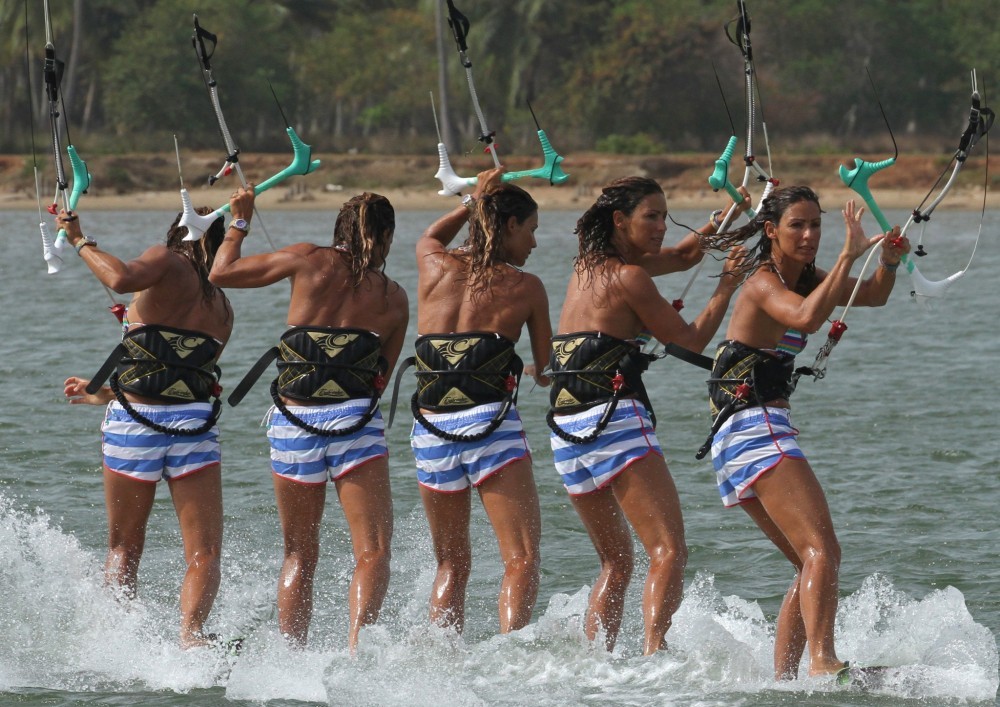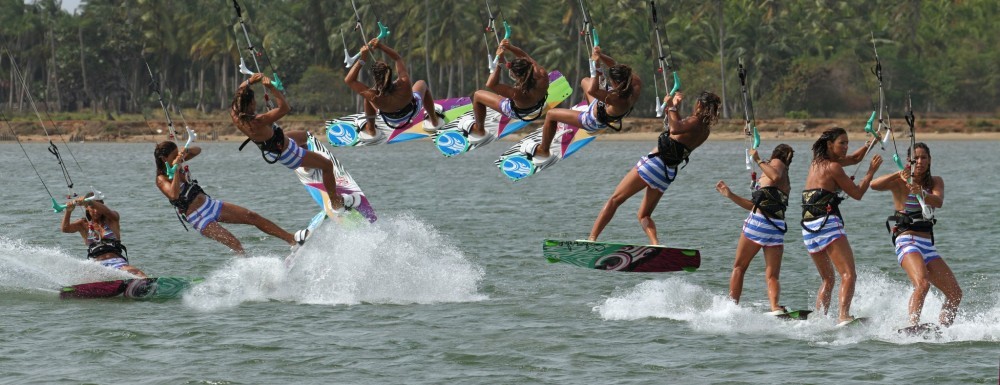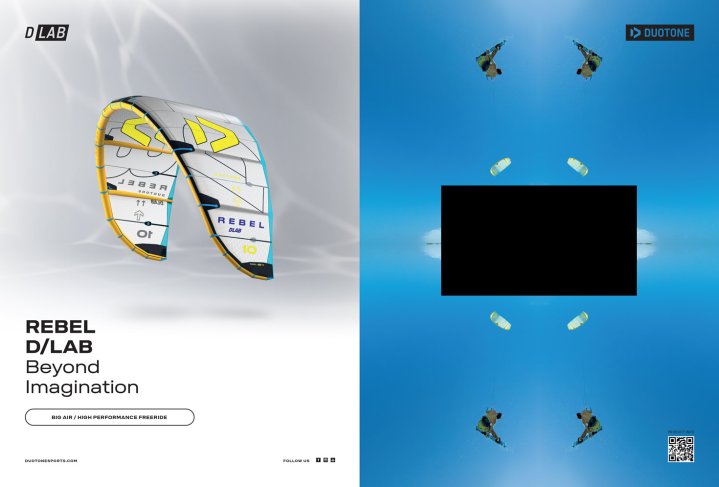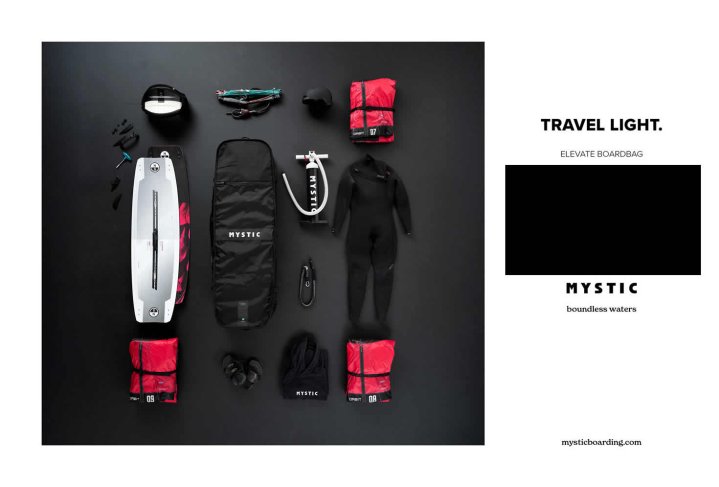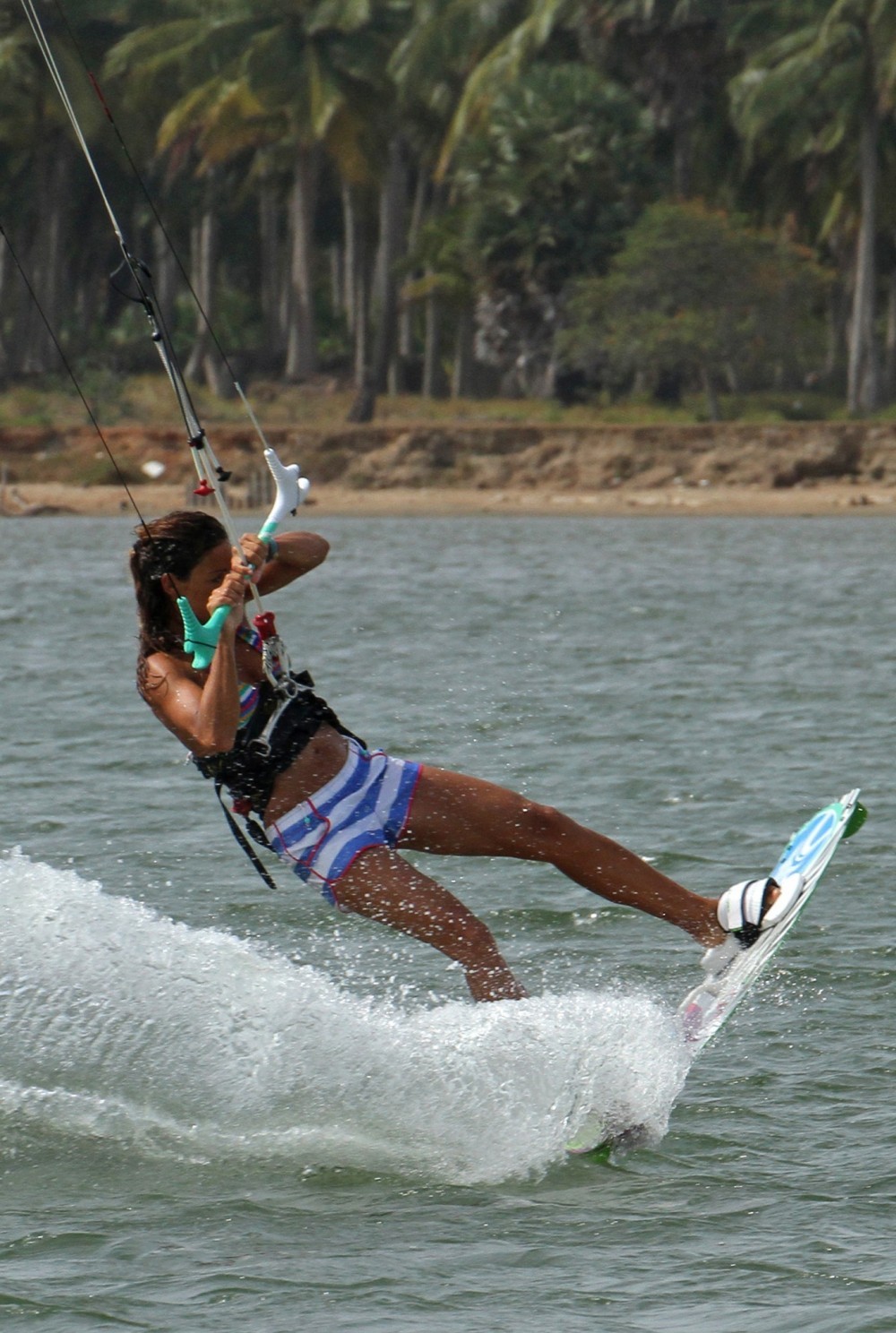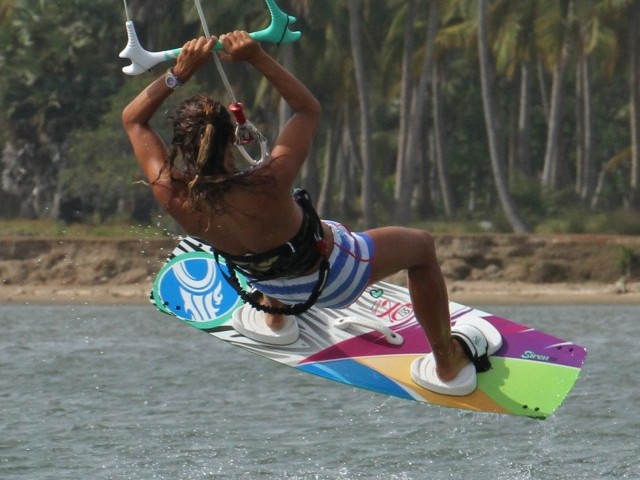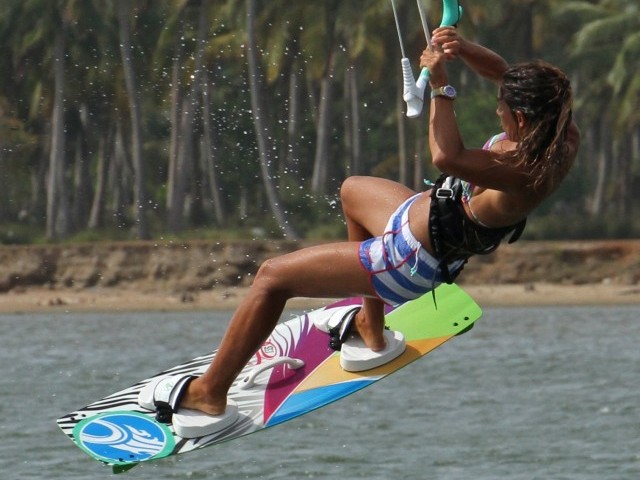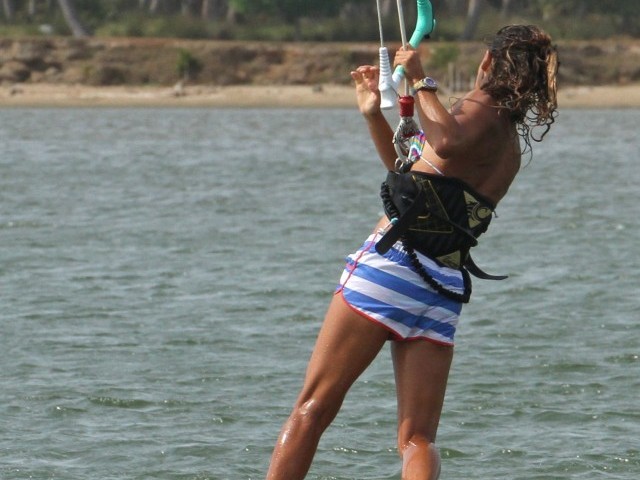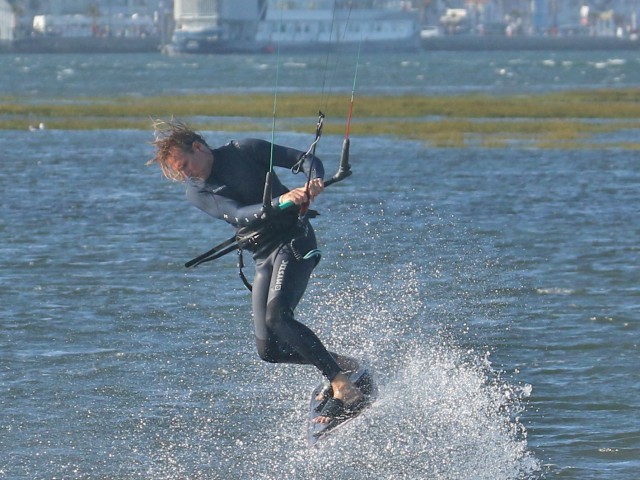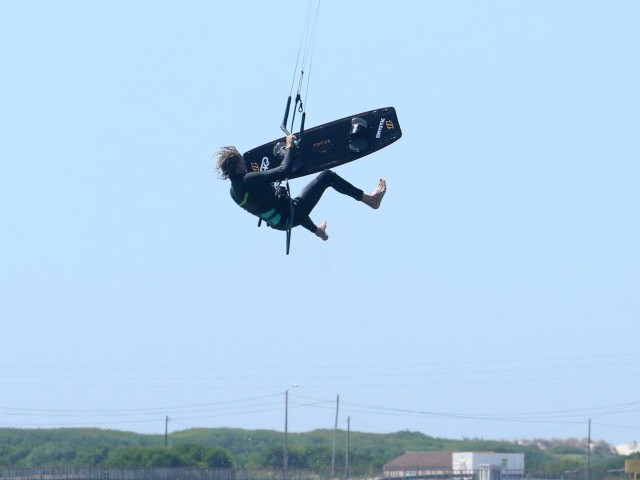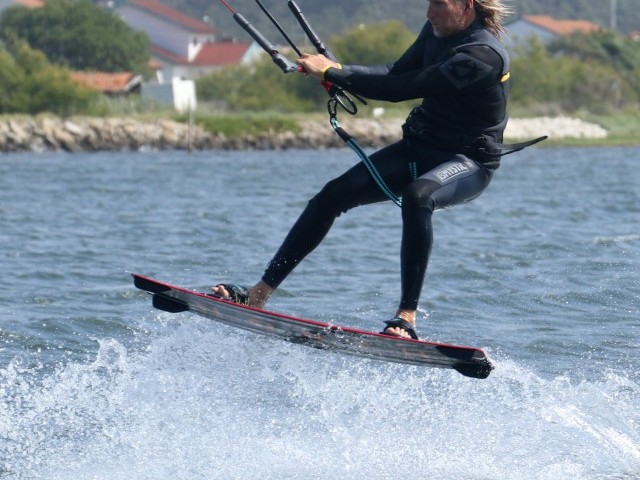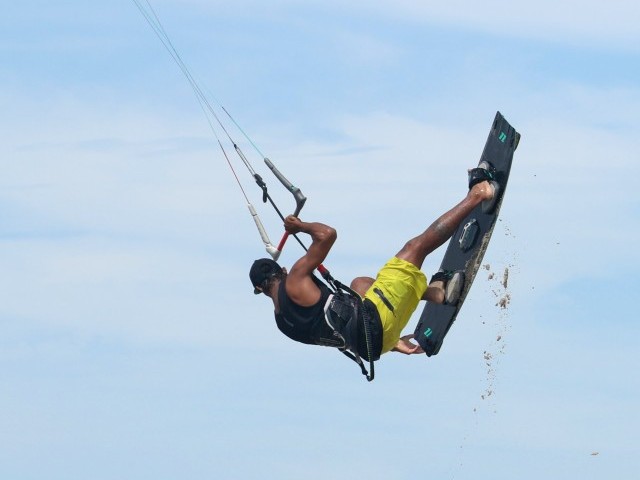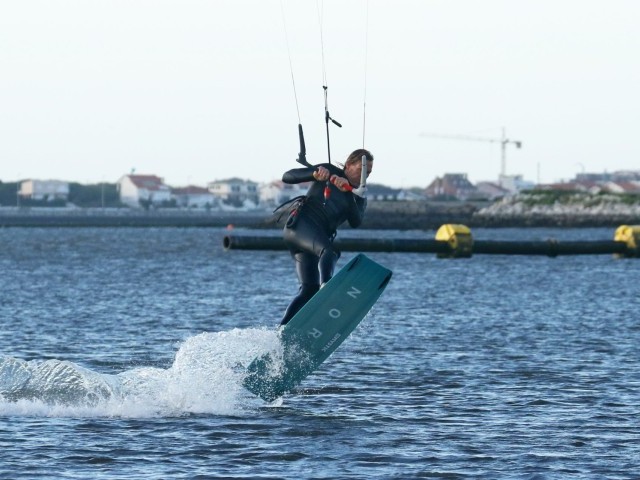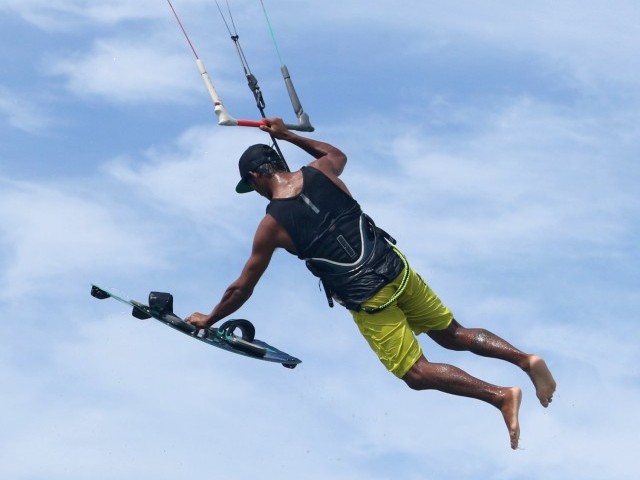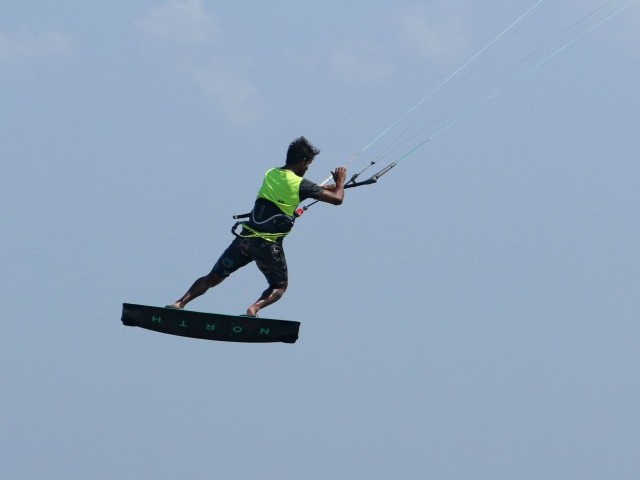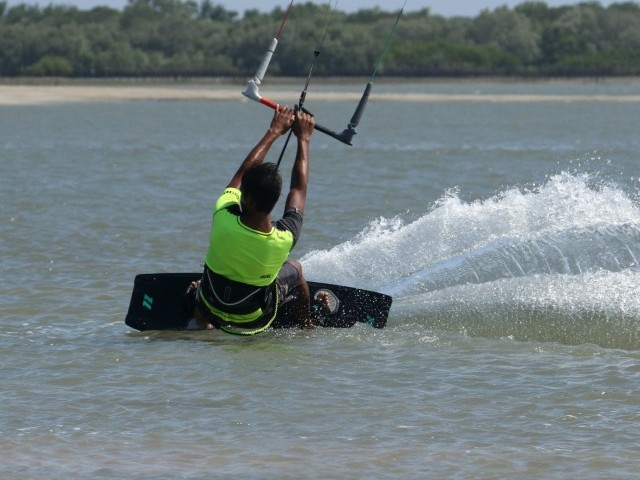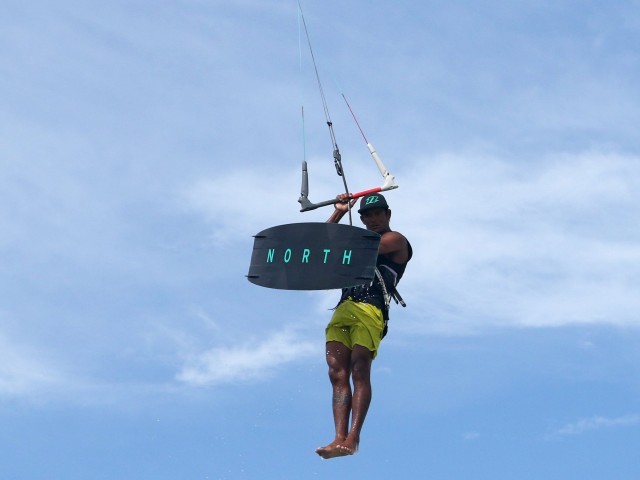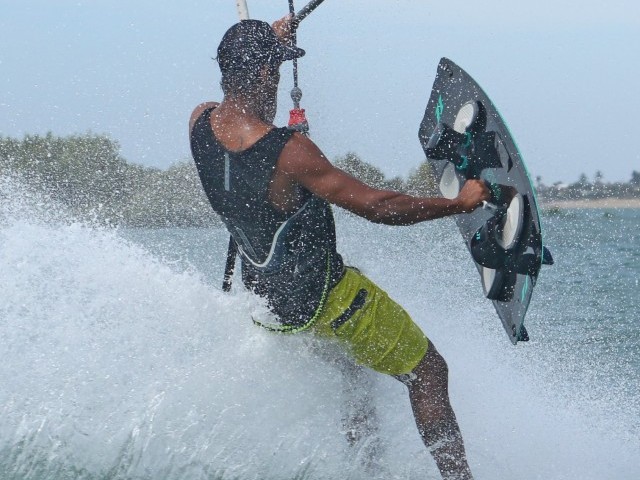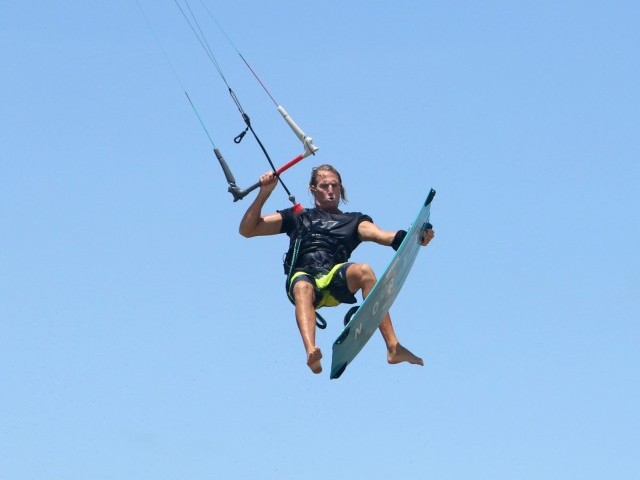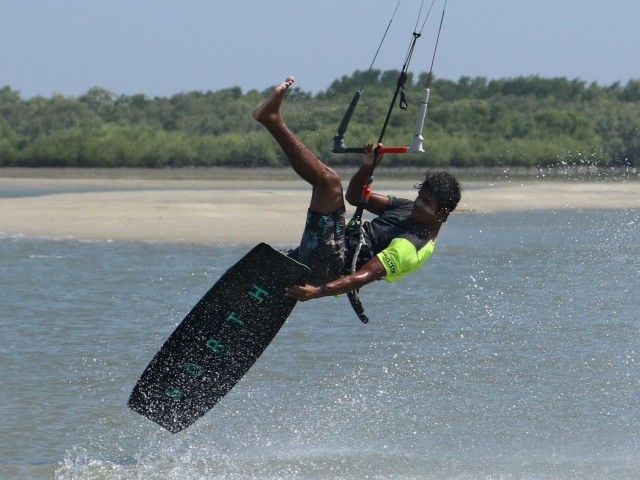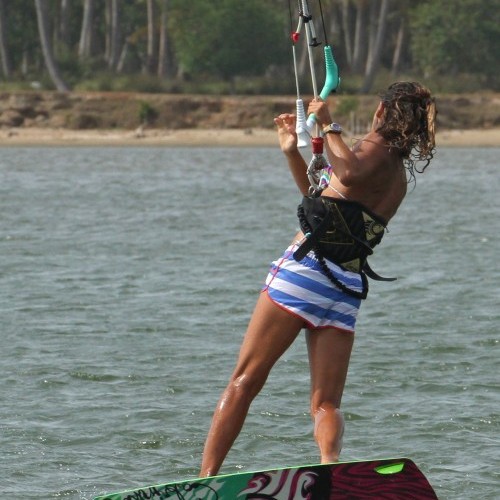
Hooked Back to Blind Ole
Technique / Advanced
Introduction
Been featuring a few of these Ole endings recently, as they are a fine way to finish off a hooked move to blind as it makes the whole trick smooth and is great alternative to getting your shoulders hammered when there is just that bit too much wind for us mere mortals to freestyle.
Without wanting to be overly presumptuous, but here goes anyway, we do assume that before considering adding this move to your ever expanding box of tricks you should already be nailing back to blinds and have a little history with the Ole, even if it’s from a pop to blind as in Issue 30. If you don’t we love and admire the ambition, but be aware that as you will be changing direction from back to blind to Ole, there is a lot going on! Based on this assumption our aim here is to remind you of and focus on the parts of greatest importance, so here goes!
The Take Off
With so much to do towards the end of this move you need to give yourself the best chance from the offset. Firstly you need enough speed and momentum, so that when you land you will keep moving blind without sinking for long enough to Ole. Hence your back loop needs to be of the popped variety. That said your kite doesn’t need to be low at 45˚, it can be crept up relatively high but the impetus for take off has to come from your back leg, and early, to stop the kite drifting above you and losing its forward pull. This will only happen if you keep the bar in with tension on the lines, flying the kite forward. You can see that Karine is exploding up off her back leg against her edge, with the bar in and the kite around 11 o’clock.
The Rotation
Backs to blind rely on a slow rotation, which when popping can be difficult. The two things that make the biggest difference her are not using your head and shoulders to throw yourself around the rotation and not bringing your knees all the way up into your chest. Both of these movements will only accelerate your rotation into a fast spin. Use you carve into take off to turn you into your rotation and bring your knees up enough that you can pull the front knee under the bar but don’t ball up the back leg. Karine is pretty much looking forward at the centre of her bar and has lifted her knees towards her to keep the board up, if she was to lift her back knee further it would tip the front down and turn her too far.
Throwing the Blind 1
As you come around to complete your rotation, it’s the signal to throw the blind. The movement is twofold, involving both you upper and lower body, and this is where having the kite in front of you really helps. Your first concern is to get the board downwind of you so that when you land, you won’t get pulled over. By simultaneously pulling on her arms and kicking her front foot away Karine swings her board downwind and in front of her. This movement is very important in a back to blind as you are reversing your rotation. With no pull and swing your board will get left behind, as will you!
Throwing to Blind 2
Once your board is moving forward towards the kite you need to get a chivvy on with turning to blind. The good news is that with the board in front and the bar close to your body, you should feel light, not dragging any dead weight behind you. As a result throwing your body and board around will be significantly easier. As with all blinds you need to commit so once you release you back hand turn your head back as far as possible to lead your shoulders. Here Karine is turning her head, whilst her shoulders turn down due to the board leading. Take note as well that her front leg is straight from swinging through, whereas her back leg is bent, holding the back of the board up. This will encourage the board to pivot fully around as the nose lands first, whilst Karine has her body relatively straight over the board. Here her aim is to keep the board flat on landing to maintain speed.
The Ole
Your control and position on landing will make all the difference here. It’s a tad trickier due to the fact that you threw the blind from a back rotation. However as long as you didn’t send the kite you should finish with the board underneath you, kite leading and enough speed to keep you moving. The secret here is not to rush, even if you are pressed for time, as that will only result in you falling back over your heels. Looking at Karine you can see that her priorities after landing are to make sure the board is flat and not edging upwind against the kite, whilst also pushing the bar away to release tension on the lines. Following that with the tension now gone, Karine turns her head and pushes the bar upwind of her. Once there, Karine can turn to face the direction of travel and simultaneously pull the bar across in front of her face. Now travelling toeside Karine reaches up for the bar with her free hand so that she can sheet back in for power and ride away rather pleased with herself.
Top Tips
Feeling your back loop. Depending on wind strength and kite size it will pay to throw a few popped backs to get a feel for where you’d like the kite to give you a good balance of pop, height and speed.
If you find that you need to use your kite more you can pull hard on your front hand when you release to throw the blind, although this is one more thing to think about!
To untangle yourself enough from the back to blind to fit the Ole in you will need to land off the wind. So make sure you bear away enough going into this trick. If you just edge up into wind and use the kite it will be very difficult to flat.
Now have a butchers at Sequence 2 and the videos to get the whole move.
Keystones
- Off the wind to pop
- Initiate rotation with edge, not head and shoulders
- Keep bar in and kite moving forward.
- Pull and swing before turning and releasing
- Land flat and off the wind before sheeting out to Ole
This technique article was in Issue 35 of IKSURFMAG.
Related
By Christian and Karine
Christian and Karine have been working together as a coaching team, running improver to advanced kitesurfing clinics since 2003.






